The winter break is over in Italy, which means calcio is back. Fiorentina travelled to face Torino in the Coppa Italia round of 16. This match promised to be a tight encounter since only one point separates both teams in Serie A. Their first match of the season, back in October, even finished in a 1–1 draw.
The match was very balanced, proving the parity between the two sides. Despite being the away team, Fiorentina played aggressively from the first minute. Their aggression paid dividends because they returned to Florence with a late 2-0 win, thus securing their place in the quarter-final. Stefano Pioli’s tactical masterclass was the reason why La Viola were able to beat Walter Mazzarri’s Torino in their home. This tactical analysis will take a deeper look at the game using statistics.
Starting line-ups
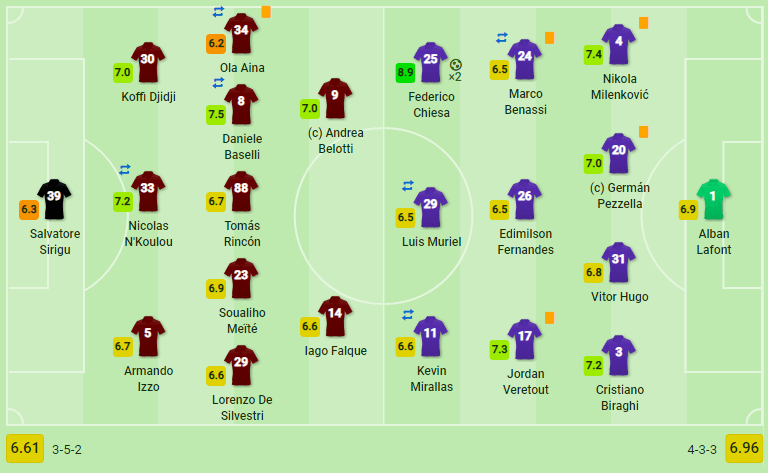
Former Paris St Germain goalkeeper, Salvatore Sirigu, started the game between the sticks. On the flanks, Chelsea loanee Ola Aina and Lorenzo De Silvestri provided the width as wing-backs. Up front, Iago Falque stood alongside the captain, Andrea Belotti. Sasa Lukic, Christian Ansaldi, and Alejandro Berenguer had to start from the bench.
Meanwhile, for the visitors, Nikola Milenkovic and Cristiano Biraghi started as full-backs. Former Everton player Kevin Mirallas started alongside Federico Chiesa and Sevilla loanee, Luis Muriel up top. Marko Pjaca and Giovanni Simeone were benched for this game.
Promising start
Fiorentina started the game with positive aggression. In their usual 4–3–3, they tried to press Torino high in a coordinated fashion. Their forwards were tasked with mirroring the home side’s back three from the beginning of the match. Torino, who used 3–5–2 on the ball, struggled to build their attacks from the back because of this early aggression.
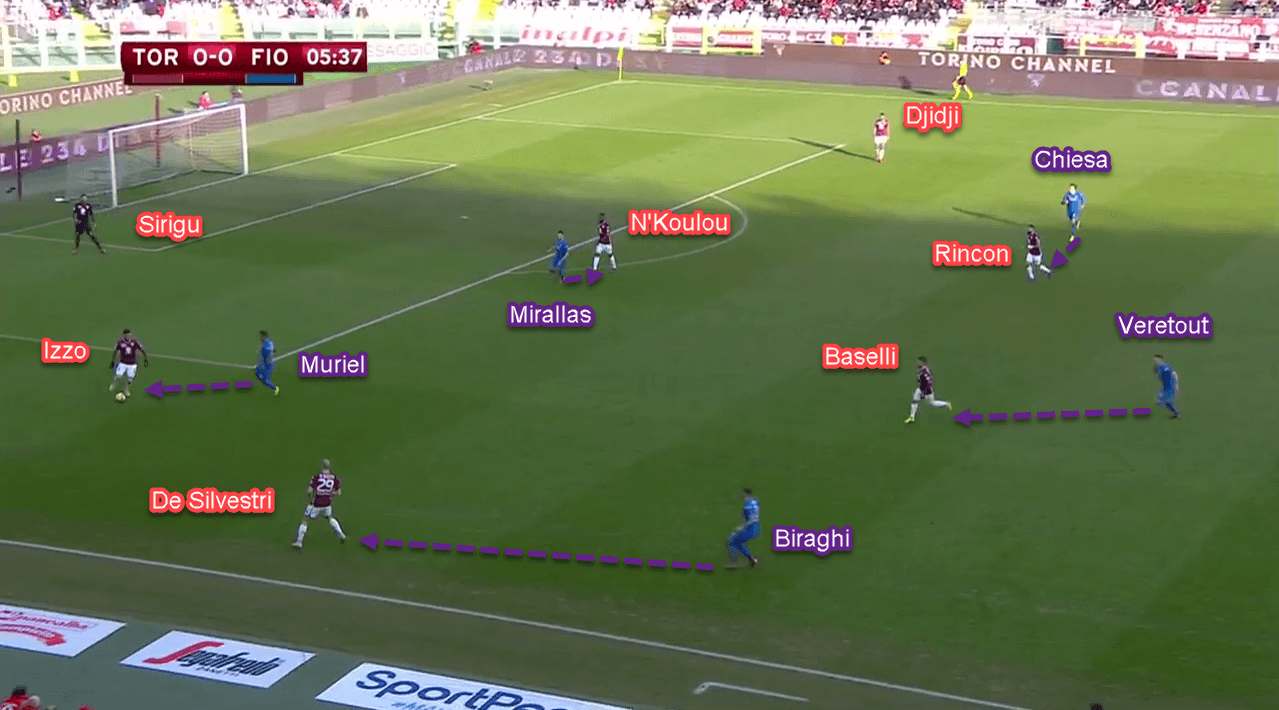
Torino also used the same approach early in the game in a slightly different fashion. One of Torino’s midfielders had to roam forward in order to prevent the ball being played short to one of the centre-backs. This forced Alban Lafont to play the ball long to the forwards, who unfortunately lacked the strength and size to win aerial balls against the home side’s centre-backs.
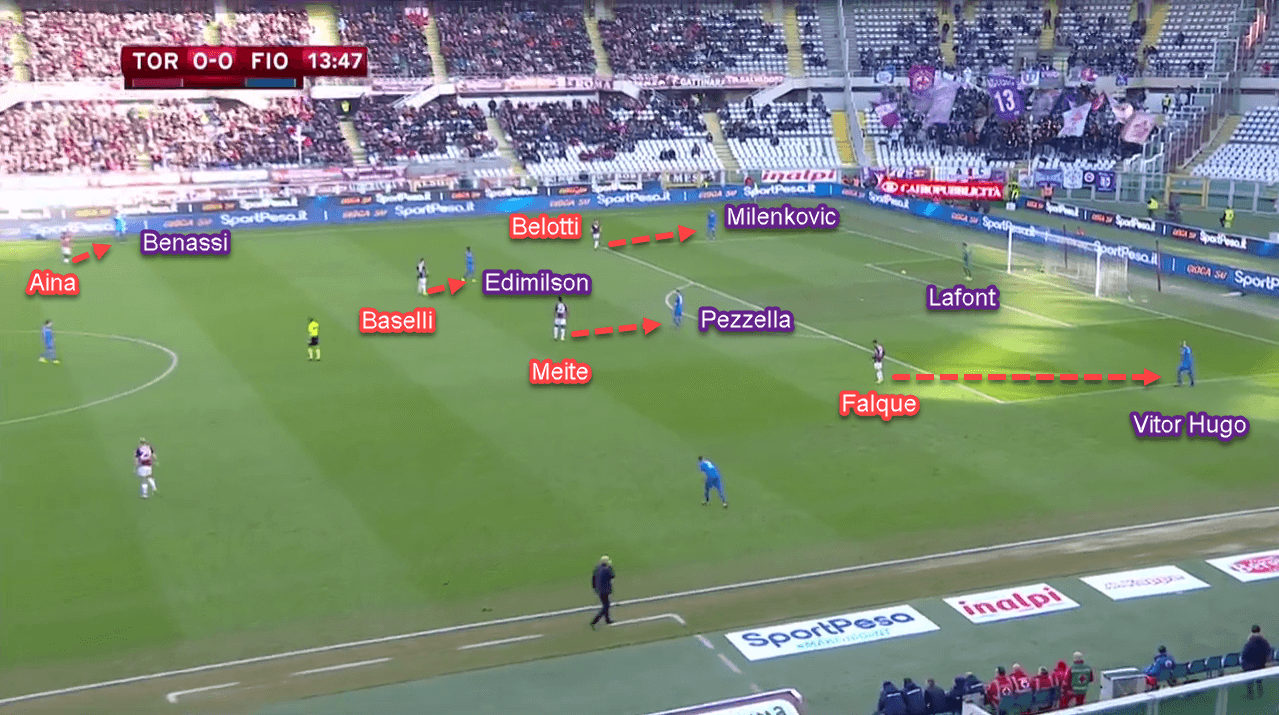
Because of the early aggression from both teams in the opening 15 minutes of the game, this match looked quite promising. As it turned out, it wasn’t. The remaining 30 minutes of the first half seemed dry as both teams cancelled each other out. No wonder the gap between them in the table is only one point. Despite the relatively equal quality from both teams in the first half, there were some interesting tactical aspects that distinguished Torino from Fiorentina.
Fascinating Fiorentina
Fiorentina’s main formation was 4–3–3 but they would convert to 3–4–3 when they wanted to build from the back. Normally, the defensive midfielder dropped between the two centre-backs in order to create an overload in the first phase. Pioli opted for a different approach for his team.
Instead of a dropping defensive midfielder, he tasked his team’s back four to shift to one side, creating a 3–4–3 that looked like a lopsided 4–3–3. Milenkovic would slot in as right centre-back, German Pezzella moved to the middle of the three while Vitor Hugo shifted to the left. In the second line, Biraghi moved up to join the midfield. The midfield trio would then drift to the right-hand side, therefore making Marco Benassi a temporary right midfielder.
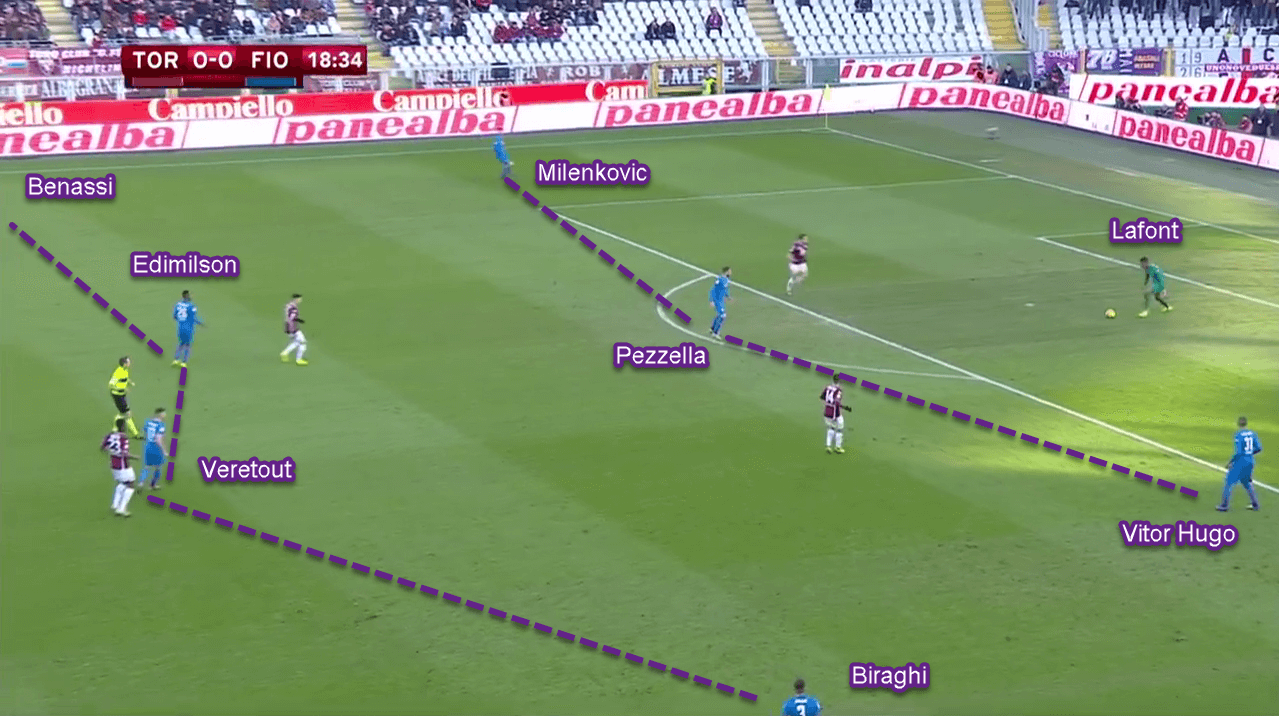
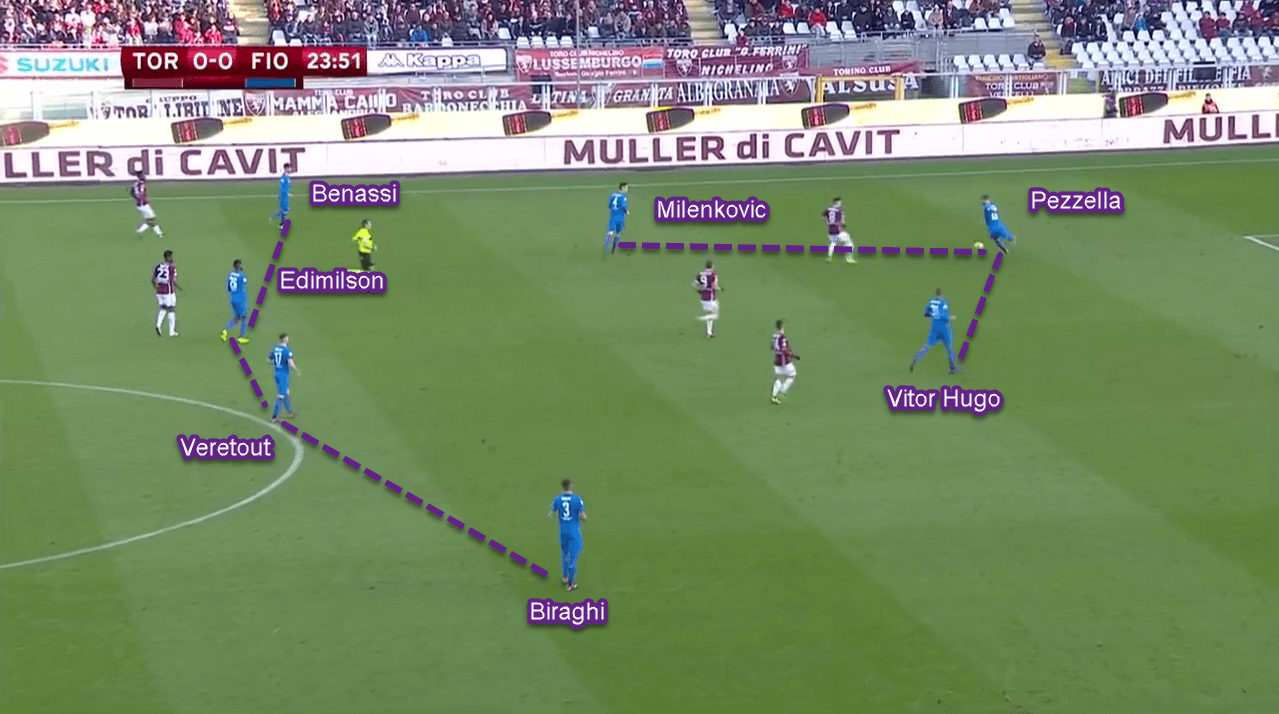
In this 3–4–3, Fiorentina’s forwards were narrow, Biraghi and Benassi providing the width they needed. Fiorentina kept their defensive stability by putting three men in their defensive line. In the middle of the park, Edimilson Fernandes and Jordan Veretout had a little attacking duty and were tasked with adding more solidity to prevent Torino’s transitions.
Pioli also had interesting tasks for his midfielders. If Torino were playing from the back and trying to find Tomas Rincon, Soualiho Meite, or Daniele Baselli in the next line, Fiorentina’s midfielders would try to press the potential receiver from behind. This forced the receiver to receive uncomfortably, thus making him return the ball to one of the centre-backs.
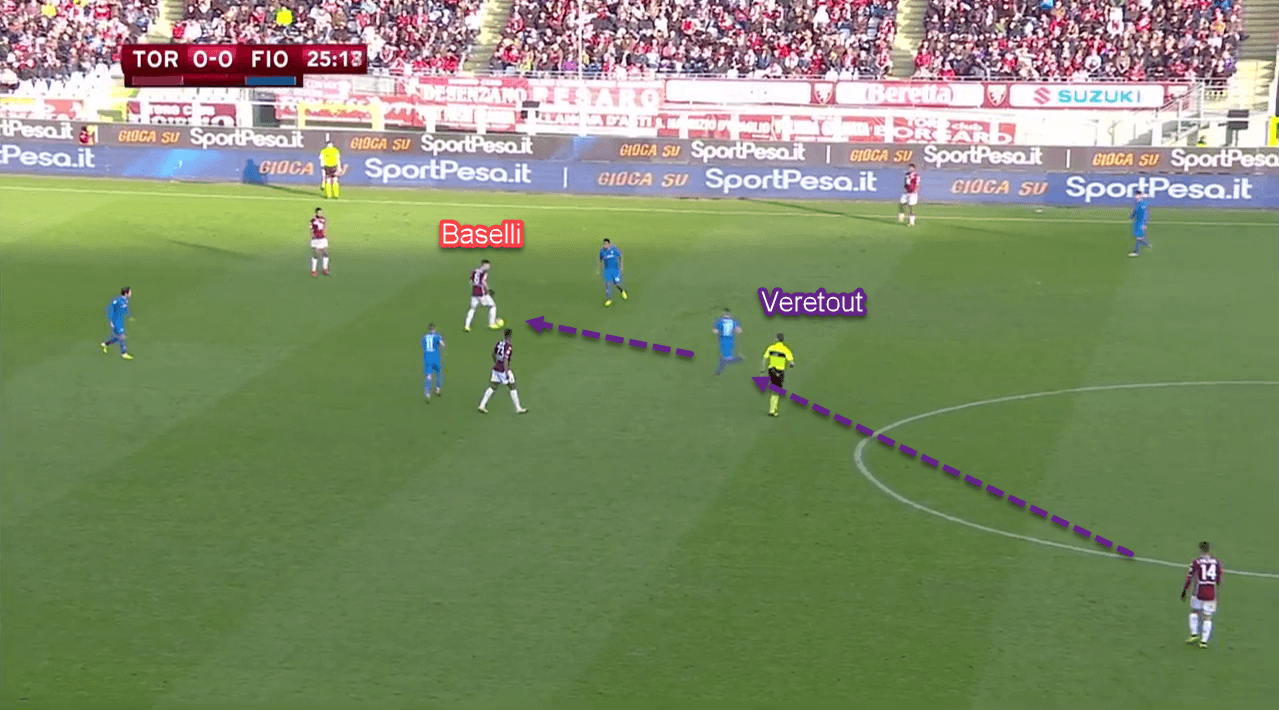
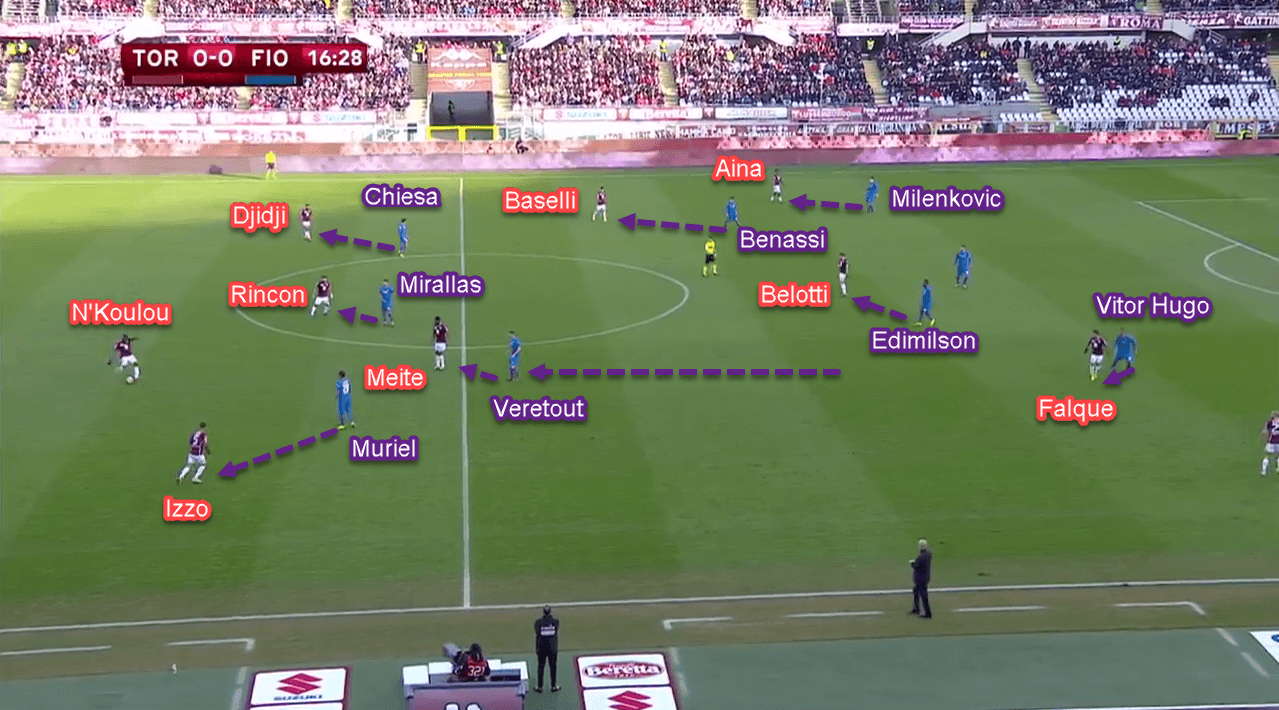
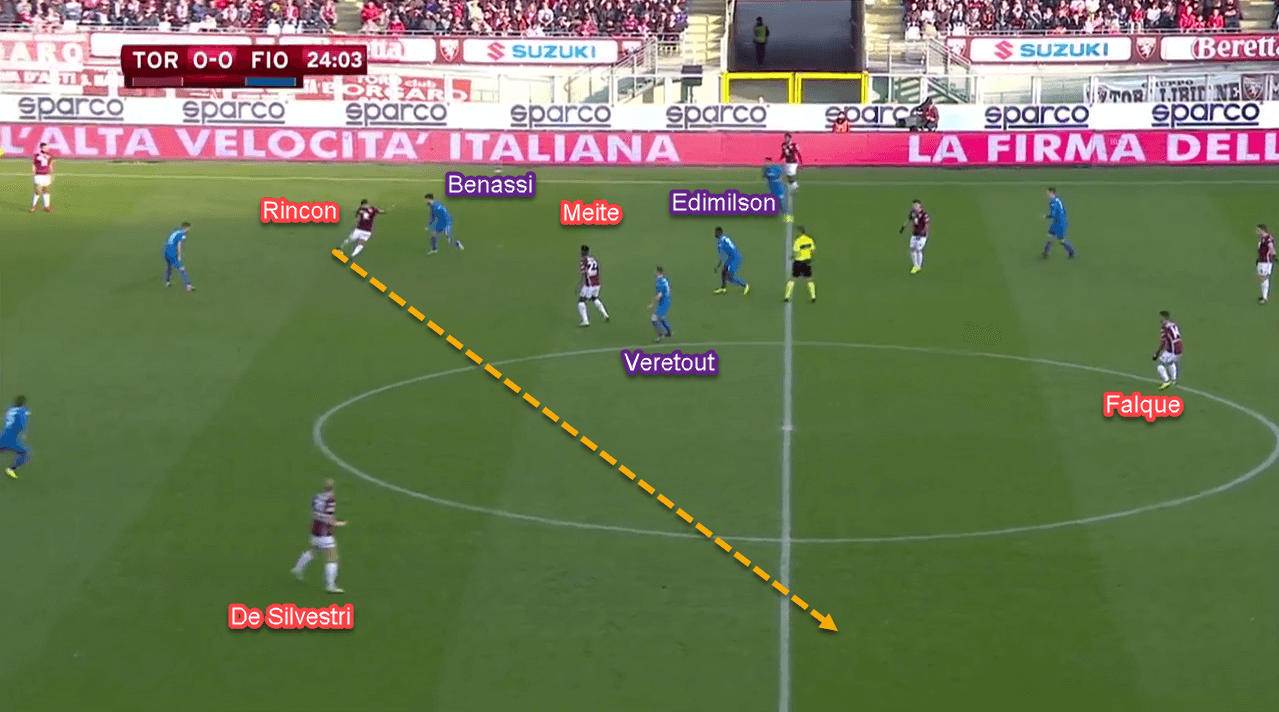
Torino’s midfielders were having trouble distributing the ball properly because of this approach. In order to help his team, sometimes Falque would drop deep to collect the ball in midfield. When he dropped, he would carry the ball forward first rather than combining with nearby teammates.
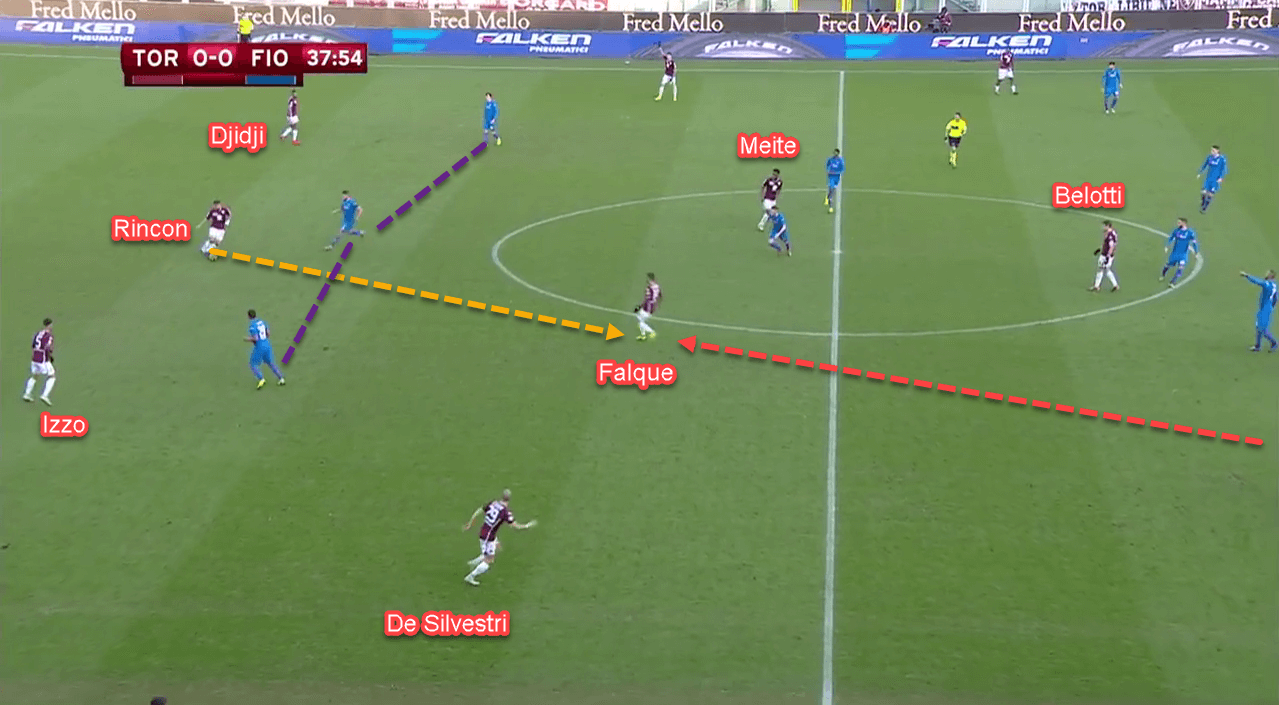
Fiorentina’s choice to play man-to-man defensively, especially in midfield, actually gave them some issues. The most visible was their choice to follow their opponents and abandon the far-side half-space or even the area in front of their defenders. This opened a huge pocket of space for Torino’s players to move into, but somehow Mazzarri’s men were unable to exploit this.
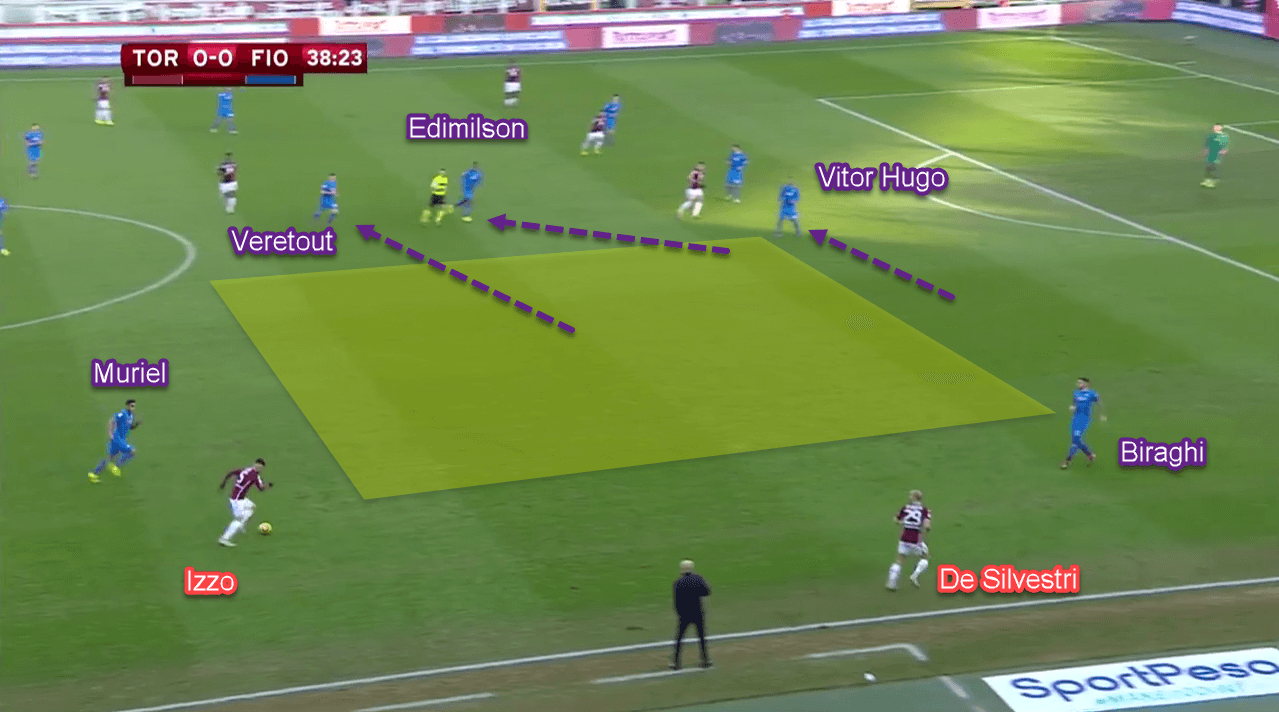
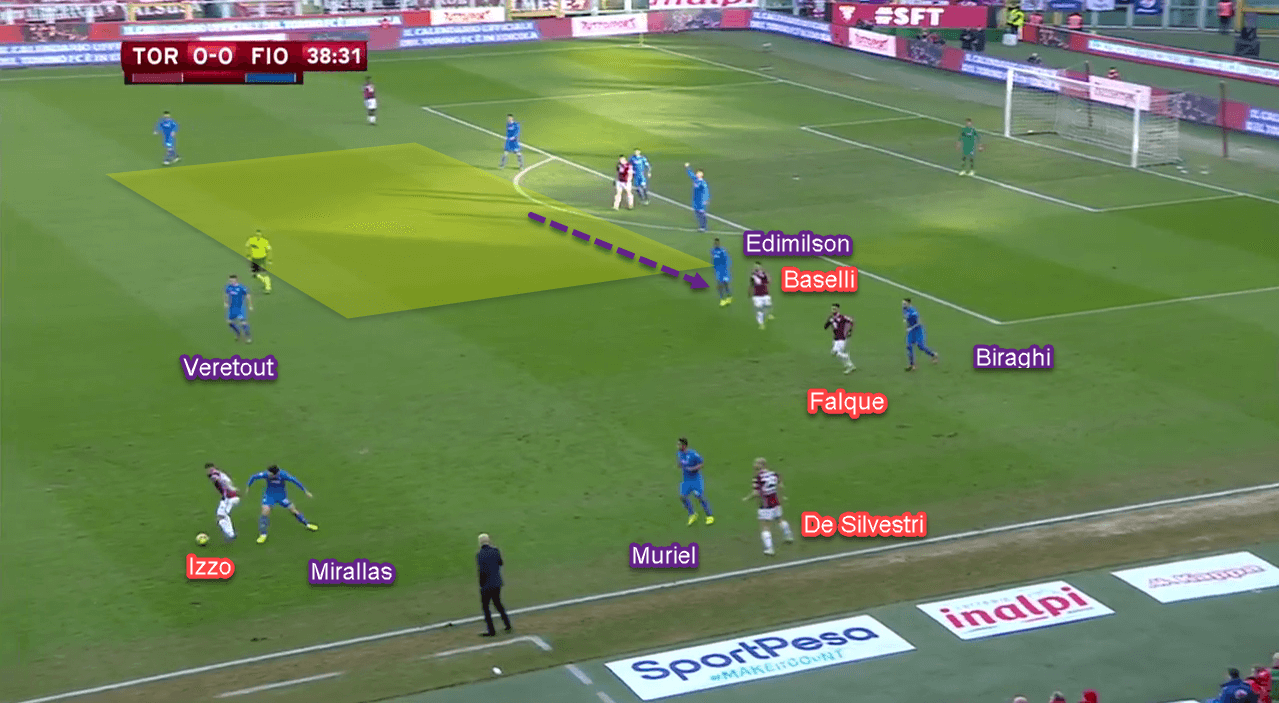
Granata’s game
I Granata had their own ways to disrupt the visitors’ defensive department. Their first option was using Falque as their main outlet. The former Roma and Tottenham player would abandon his forward role next to Belotti in order to drop and drift into the right-side half-space. There he would combine with De Silvestri, who would happily make overlapping runs next to him. The duo then would try to find Belotti with their crosses.
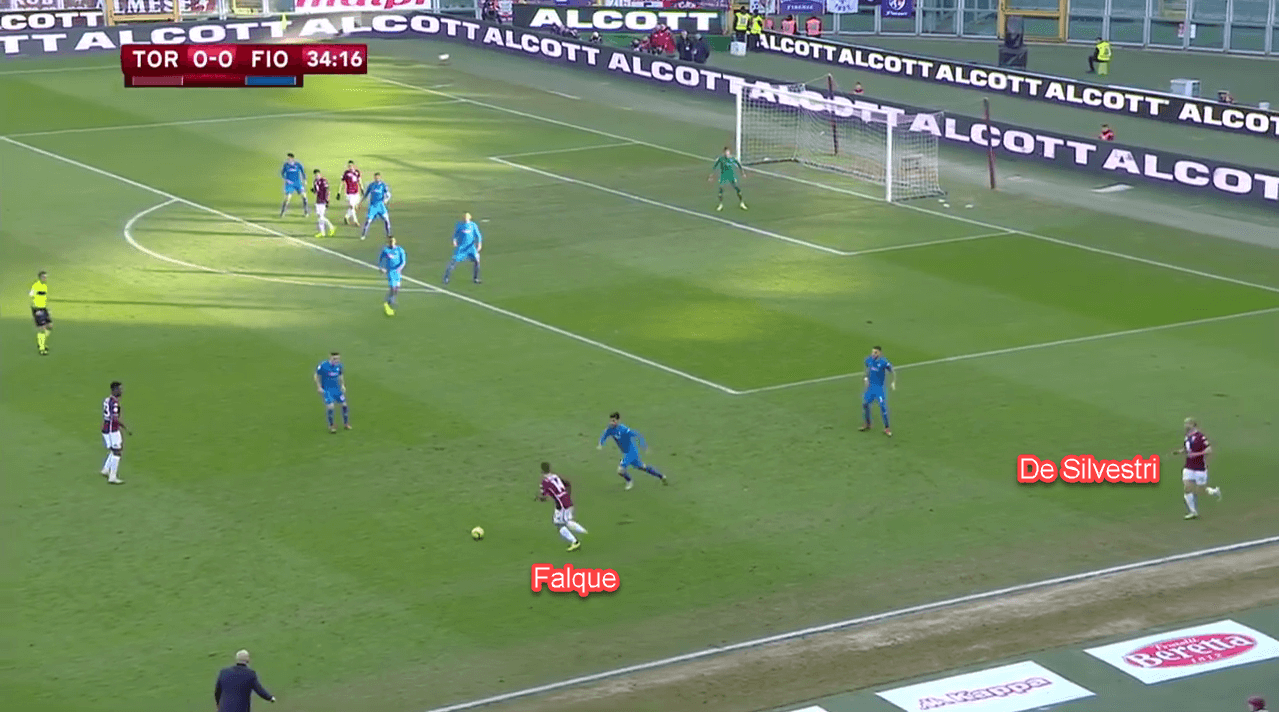
Apart from using De Silvestri as Falque’s partner on the right-hand side, Mazzarri also had another idea how to utilise him. De Silvestri was very aggressive with his offensive runs, and he gave Fiorentina some problems. The bald wing-back would gladly offer himself as a crossing target at the far post. His forward movements were not limited on open play, but he was also very aggressive in dead-ball situations.
By offering himself at the far post, his darting runs were almost undetectable because he was coming from Biraghi’s blind spot. Another positive impact of his runs was giving Fiorentina’s defenders more headaches because they already had Belotti and Falque or Rincon to mark. De Silvestri did score once but his goal was disallowed because he was already in an offside position. Nevertheless, it was very positive indeed.
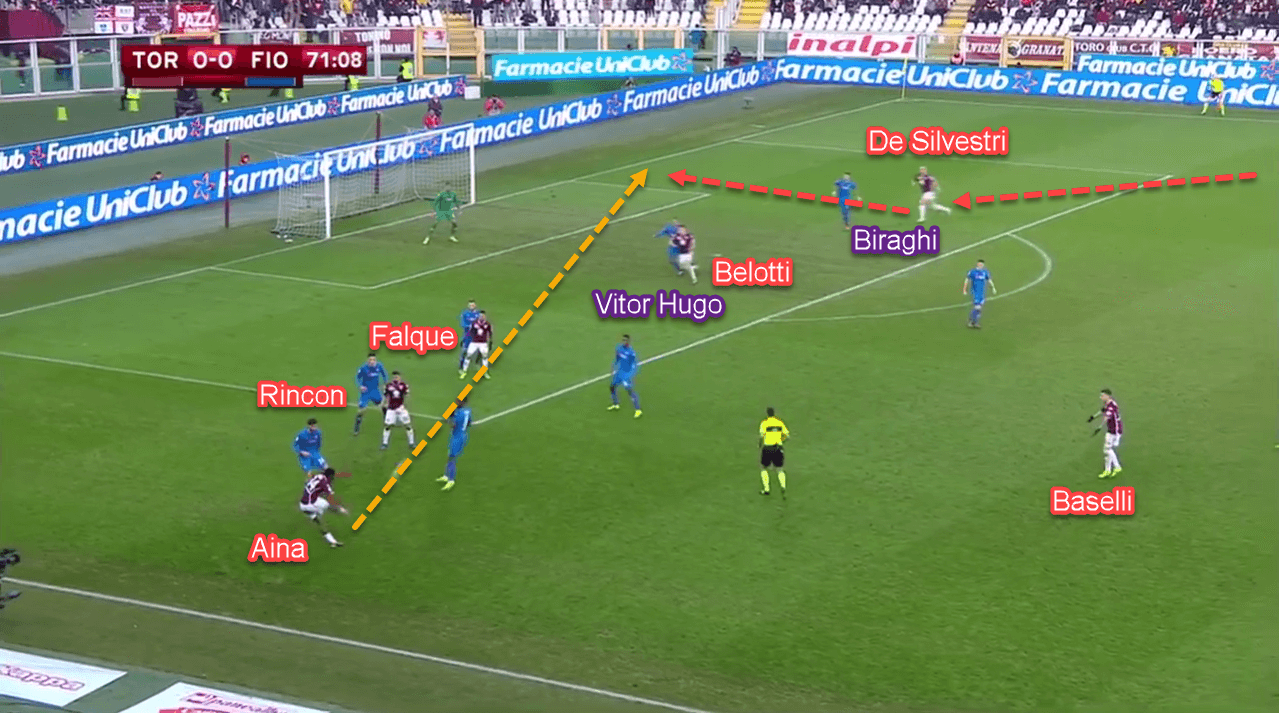
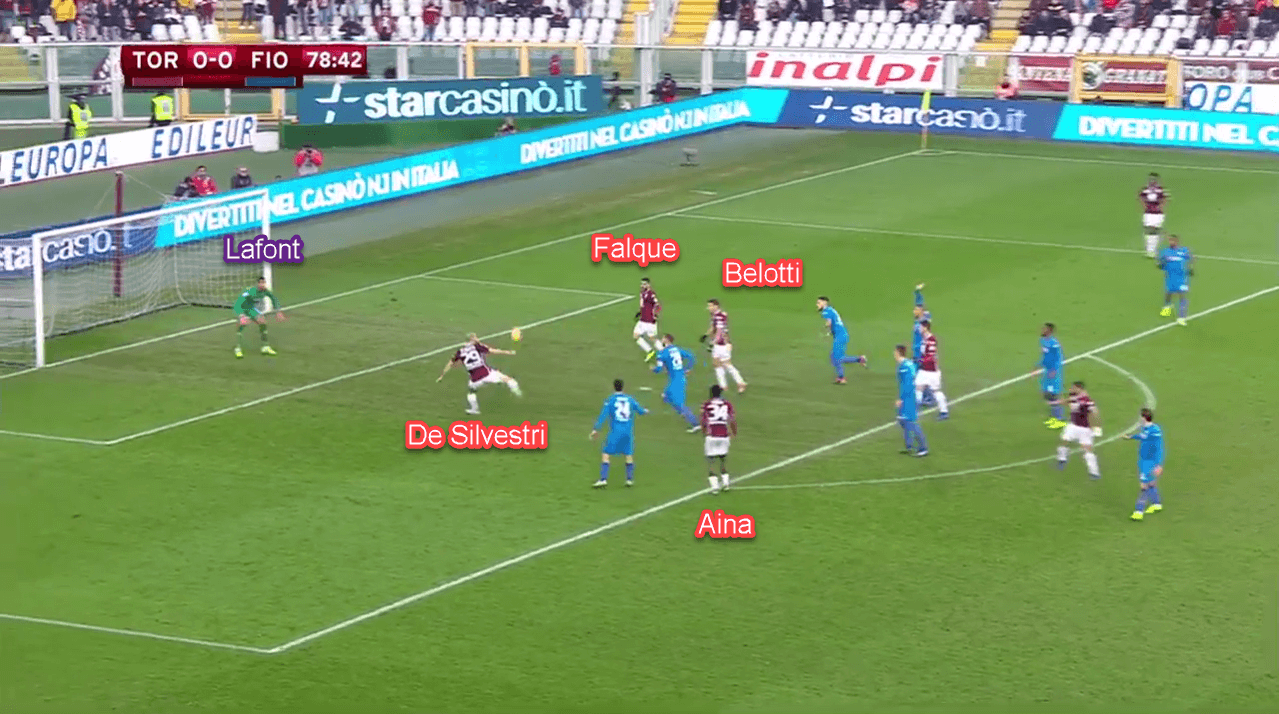
Pioli’s adjustments
Pioli was quite unhappy with his forwards’ performance in the first half, especially Mirallas and Muriel. Both were unable to create chaos in Torino’s defensive areas so Pioli decided to sub them off. Mirallas was subbed just six minutes into the second half for Gerson, and Muriel 10 minutes later for Simeone. The decision to leave Chiesa on the field was very effective and successful for his side.
Late in the game, Torino got a chance to equalise via a corner kick. The ball was cleared and fell to Simeone’s feet near the halfway line. The fresh-legged Argentinian then superbly outmuscled Djidji and attempted a shot when he arrived in the box. Sirigu, who played brilliantly throughout the match, parried the ball.
Unluckily for him, the ball found Chiesa’s feet, who had already made his run into the box from the opposite side of the pitch. Chiesa then scored with his first touch, helped by a little deflection, in the 87th minute. Advantage Fiorentina.
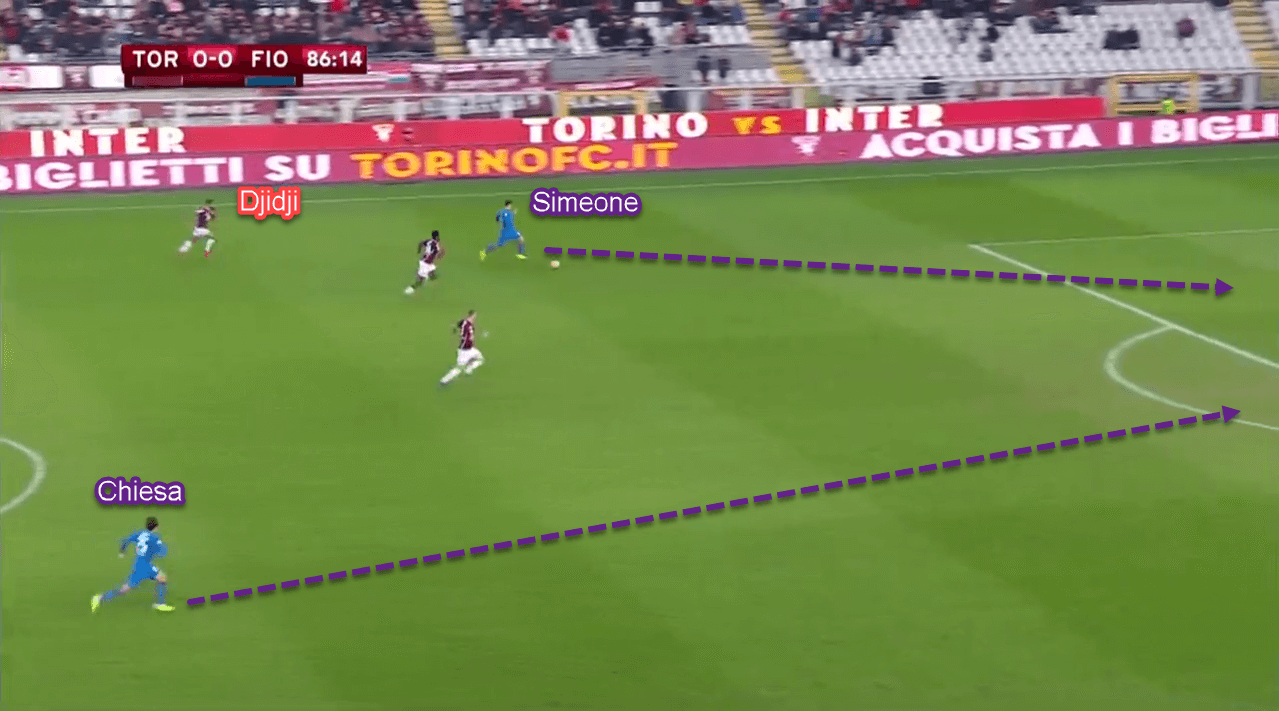
Five minutes later, Torino got another corner. Again, Fiorentina’s defenders were able to clear the ball. Chiesa, who already waiting on the halfway line, ran at full speed to chase the ball. Surprisingly, he was able to outmuscle newly-introduced centre-back Lyanco. He won the ball and only had Sirigu to beat. The right-winger then calmly slotted the ball inside the far post. Game over.
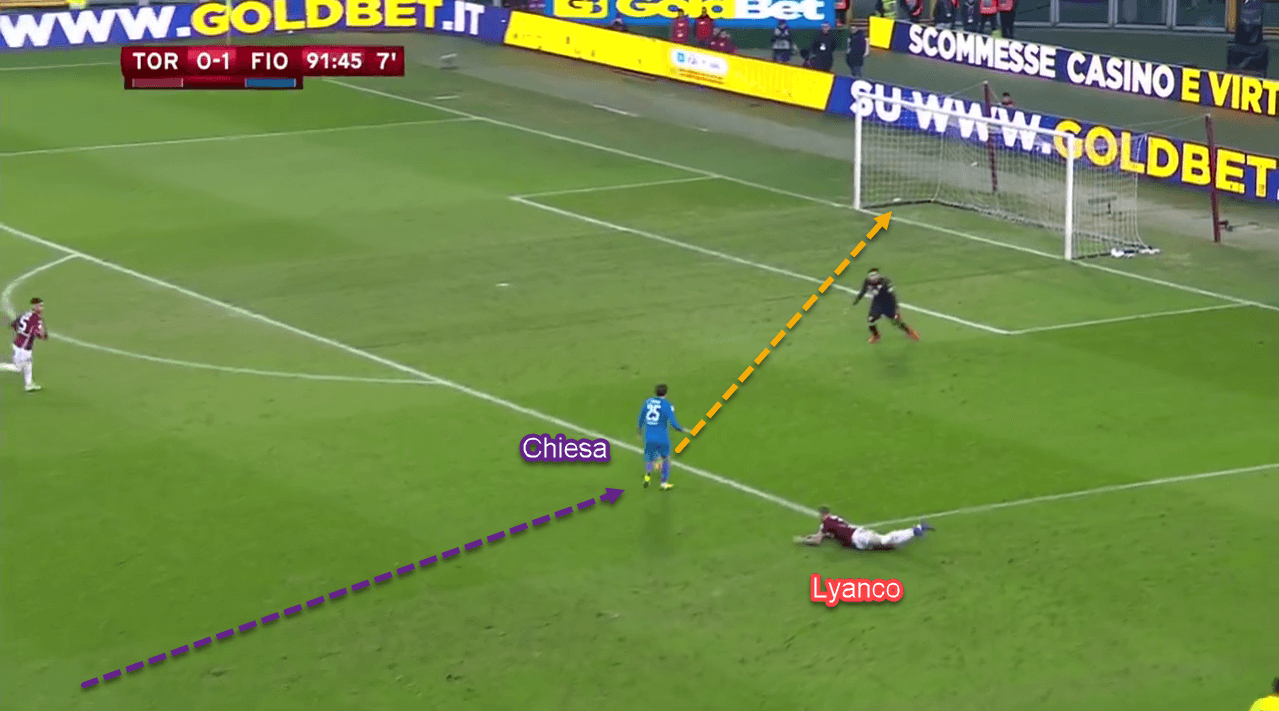
Conclusion
In truth, the game was quite dull because both teams nullified each other. The ball was constantly cleared by the defenders and there were only four shots in total from both teams in the first half. Yes, there were some actions that needed VAR to review, but none of them changed the course of the game.
Apart from their monotonous midfielders, Torino were able to give some fight with De Silvestri and Sirigu’s brilliant performances. At the end of the day, superb alterations from Pioli and a match-winning performance from Chiesa separated the sides. Fiorentina now have to face sixth-placed Roma in the quarter-final.
If you love tactical analysis, then you’ll love the digital magazines from totalfootballanalysis.com – a guaranteed 100+ pages of pure tactical analysis covering topics from the Premier League, Serie A, La Liga, Bundesliga and many, many more. Pre-order your copy of the January issue for just ₤4.99 here, or even better sign up for a ₤50 annual membership (12 monthly issues plus the annual review) right here.

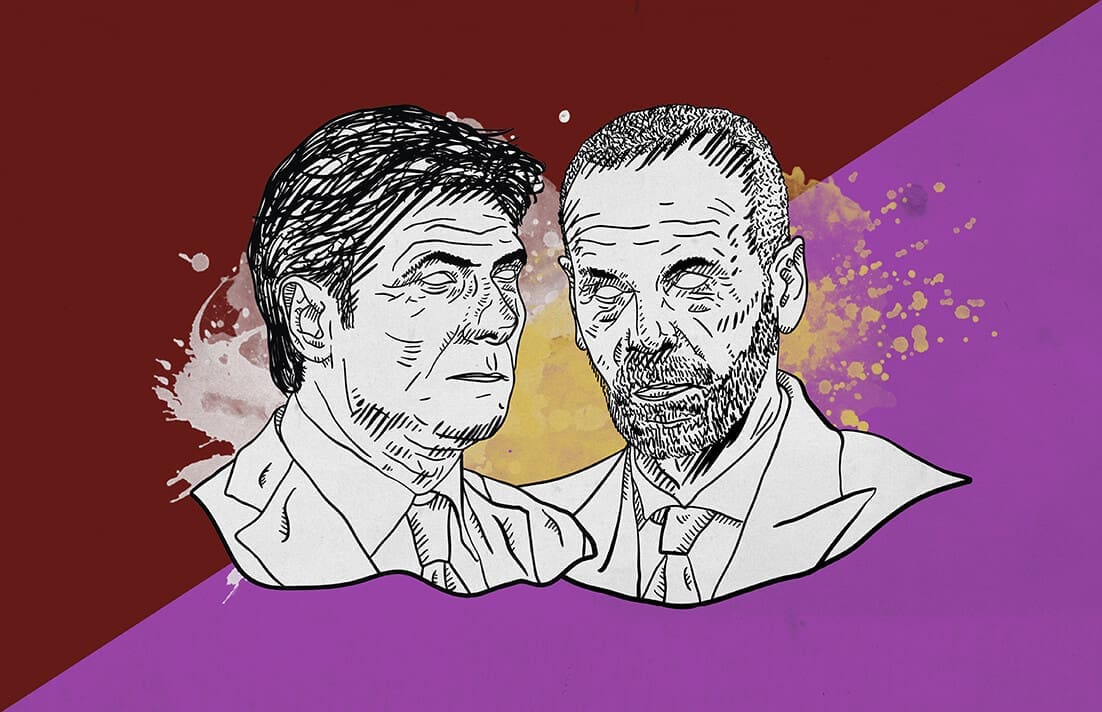



Comments